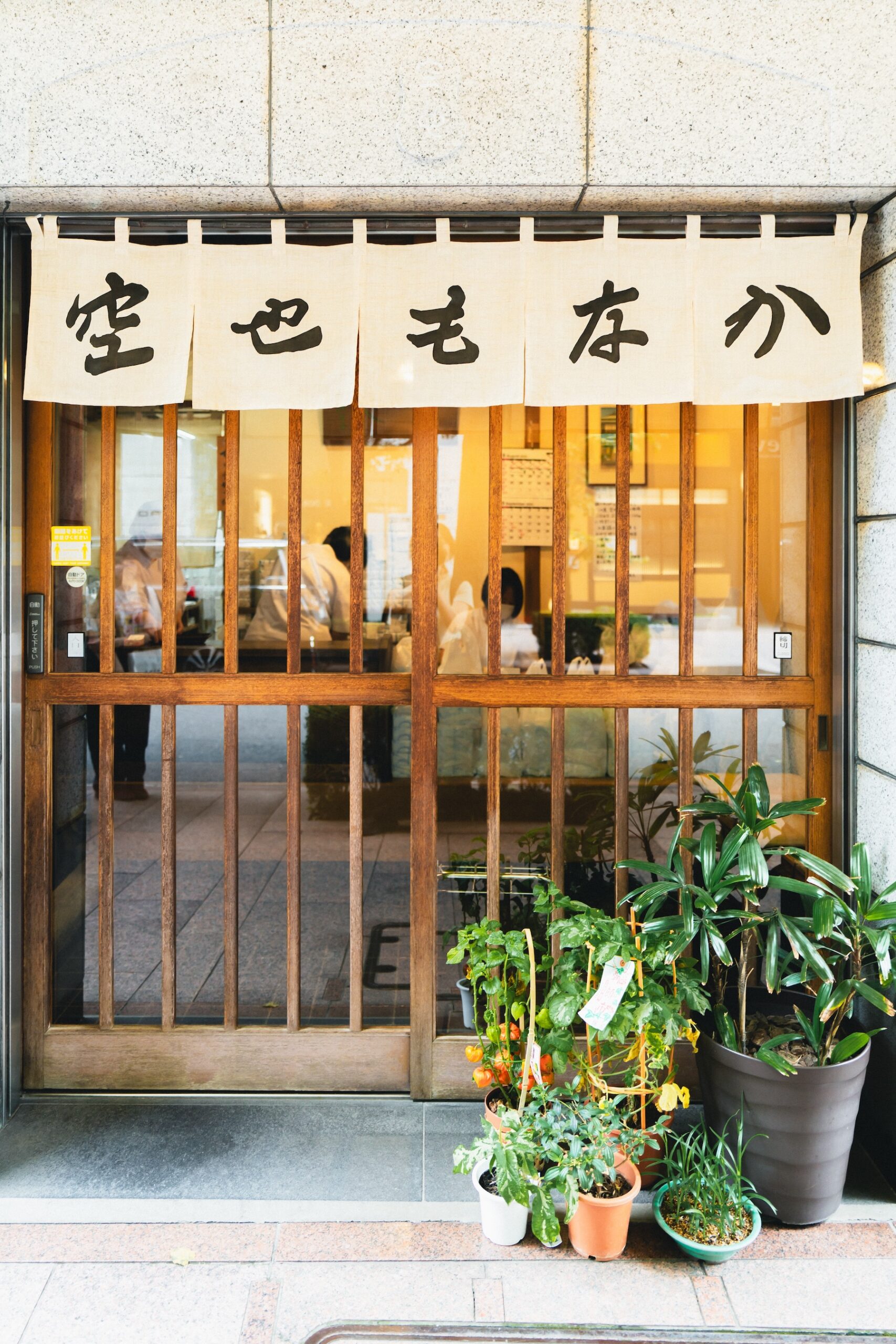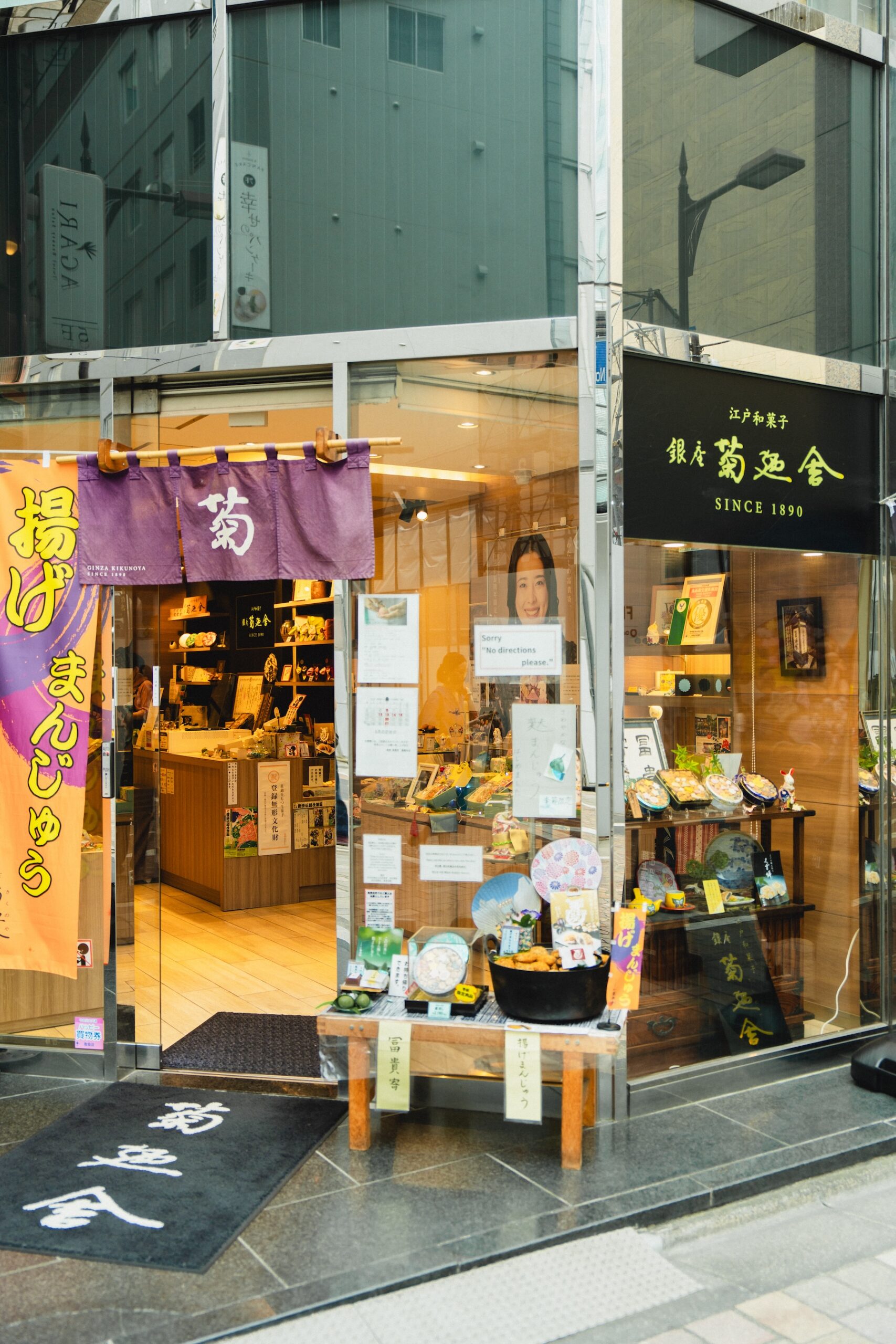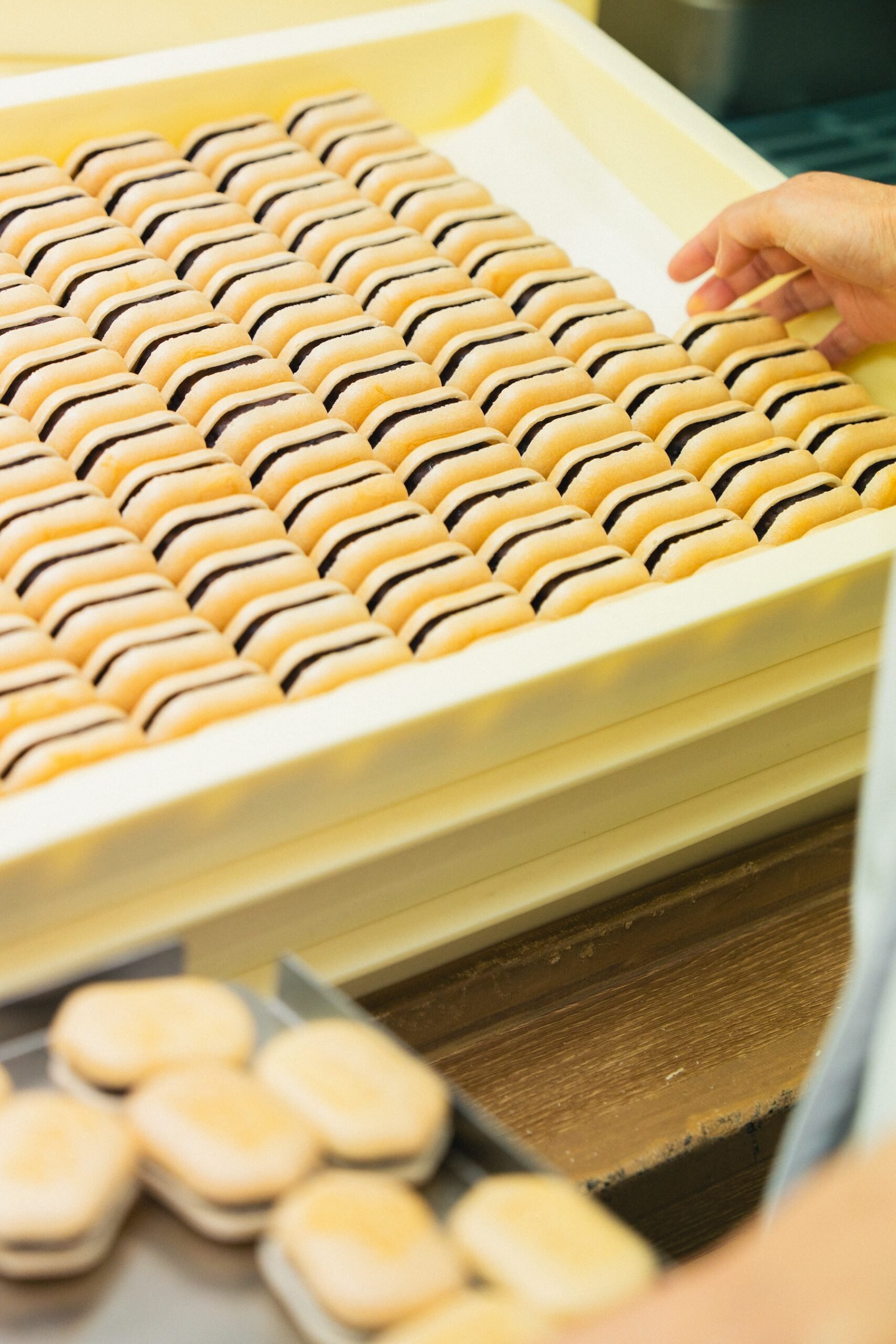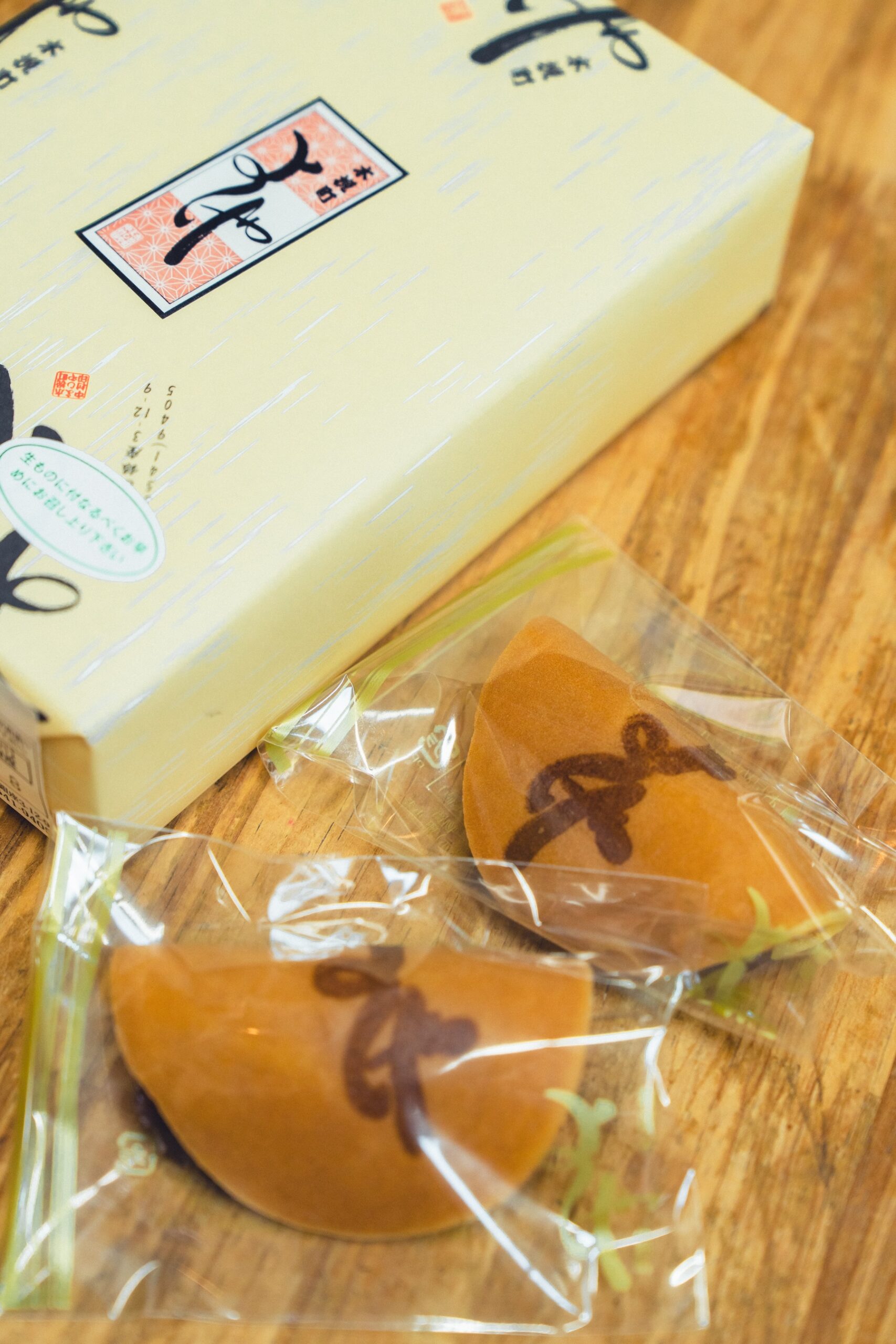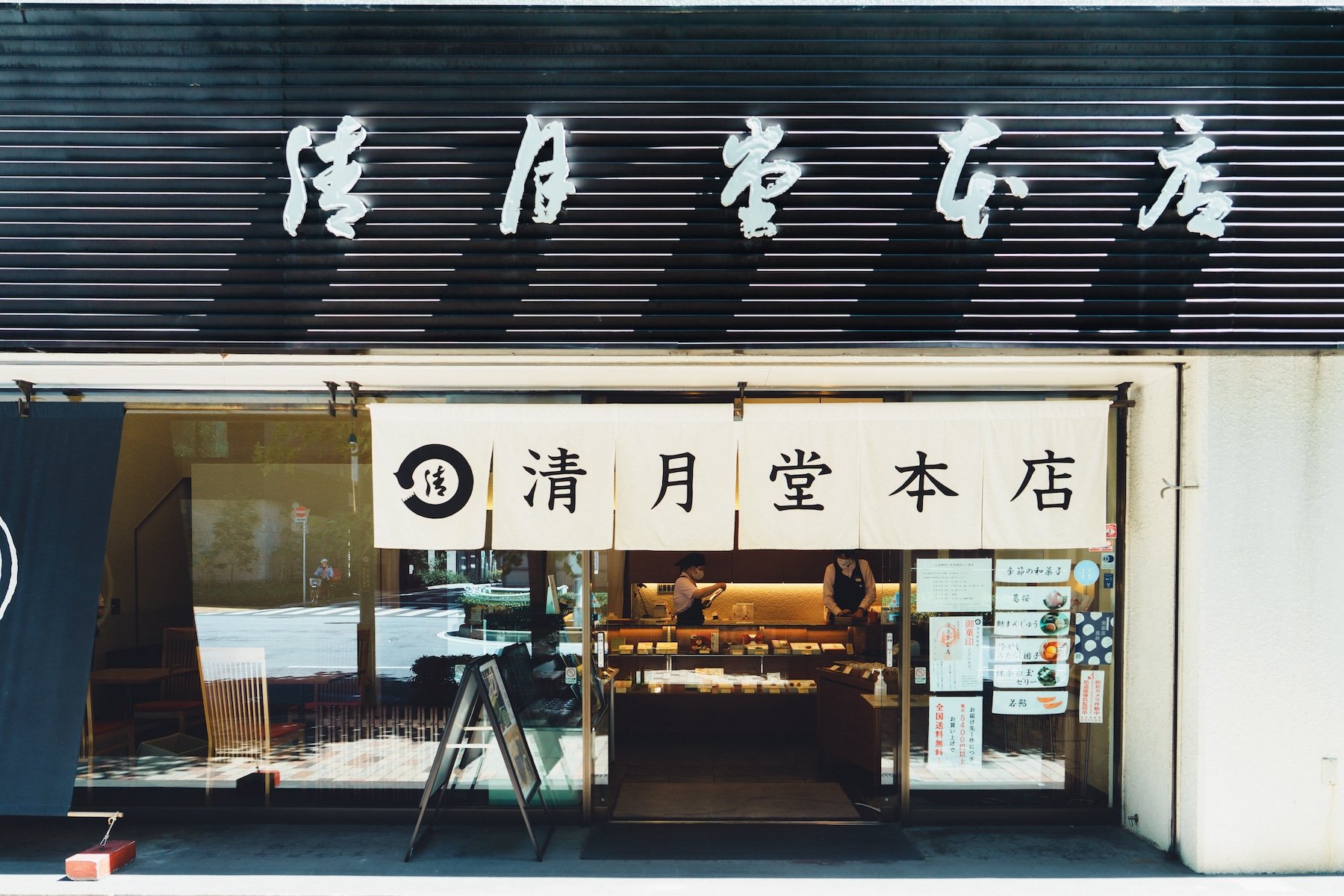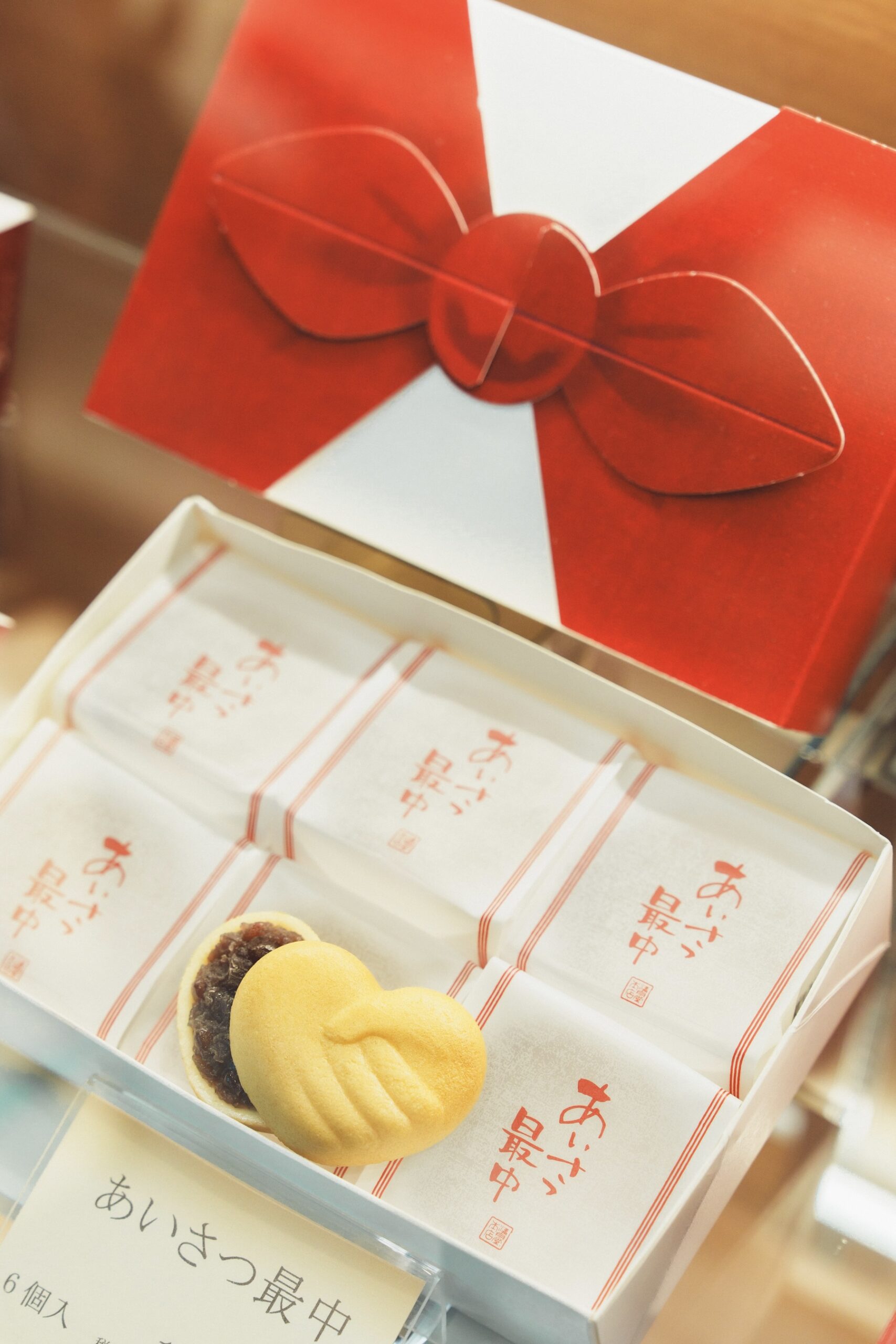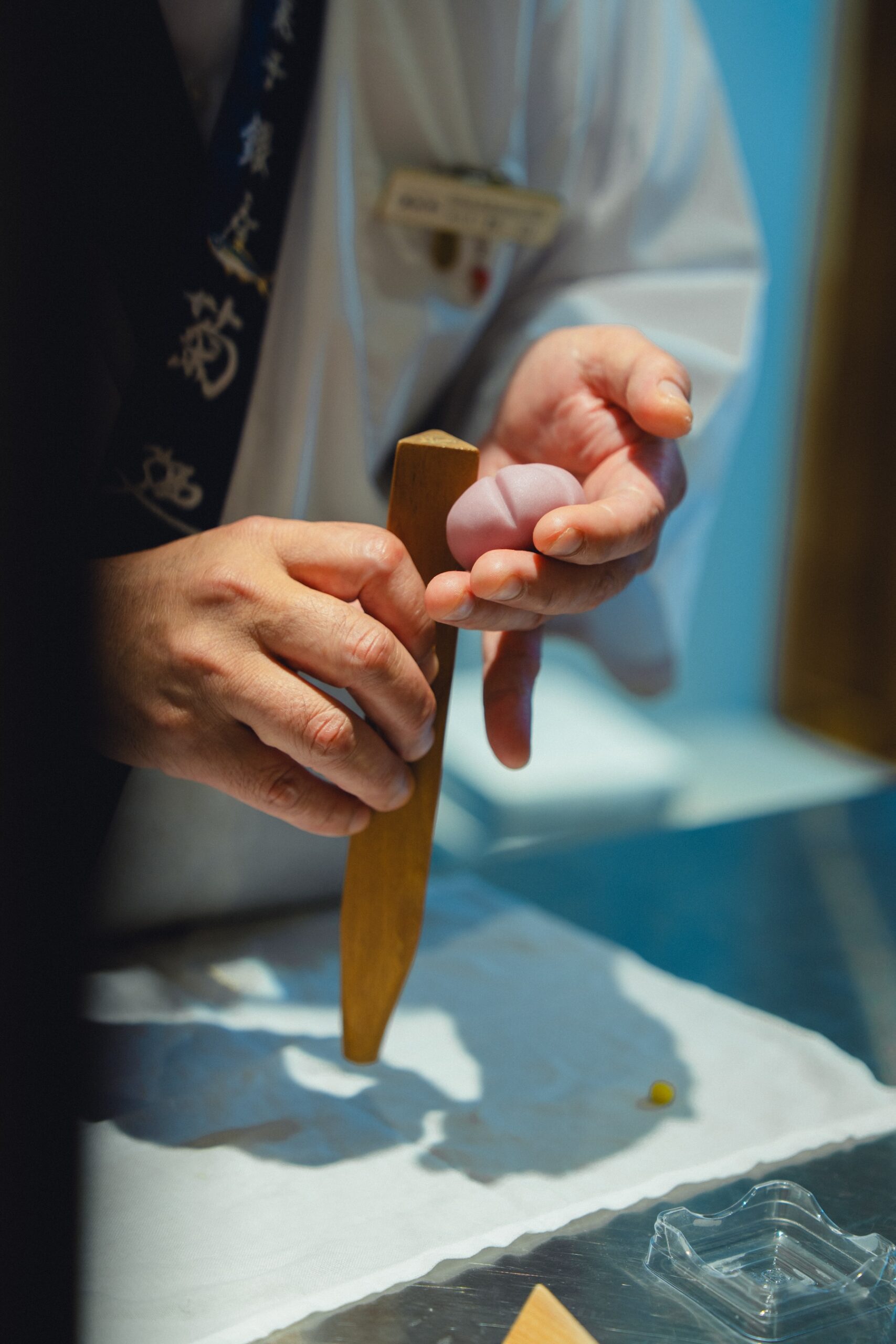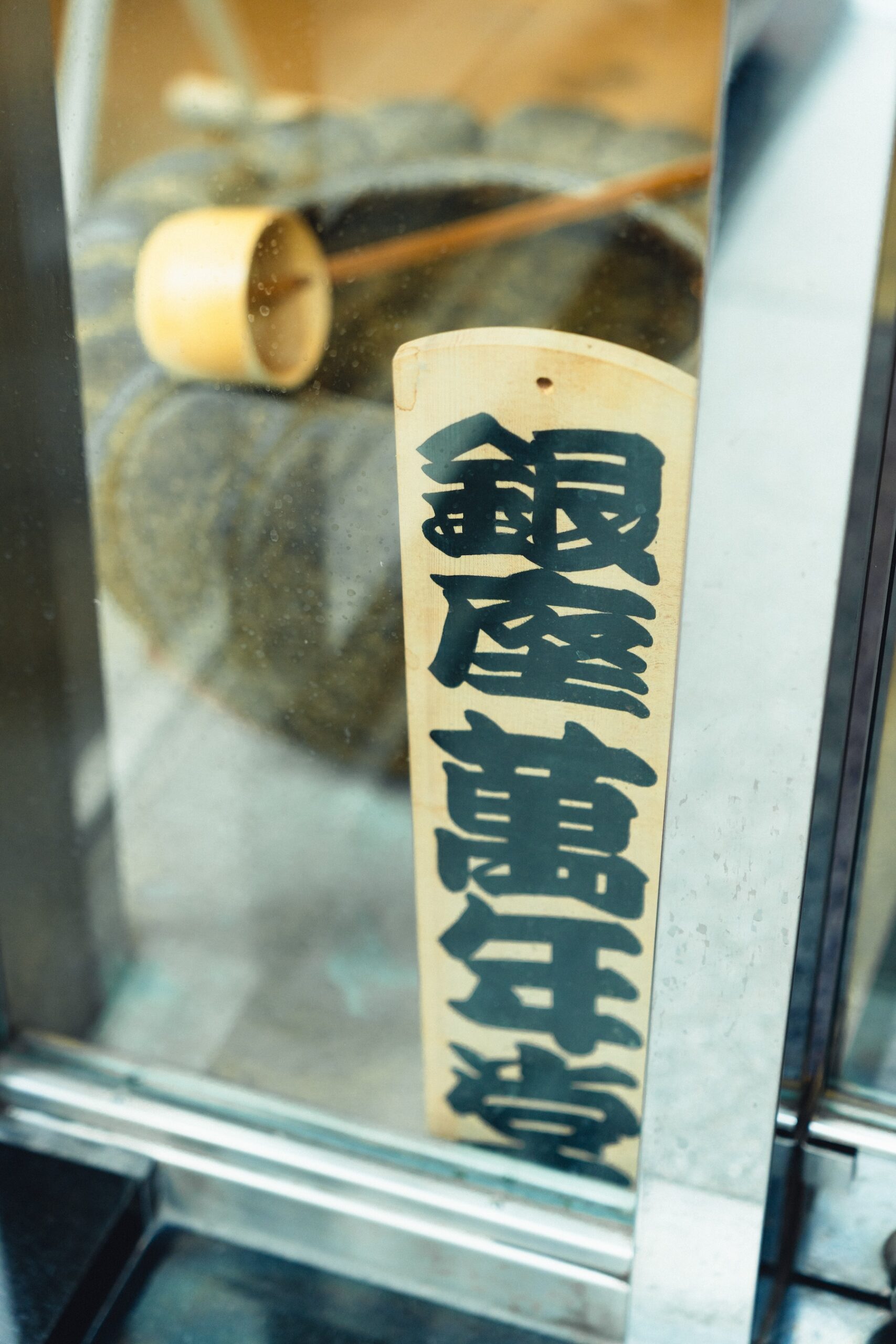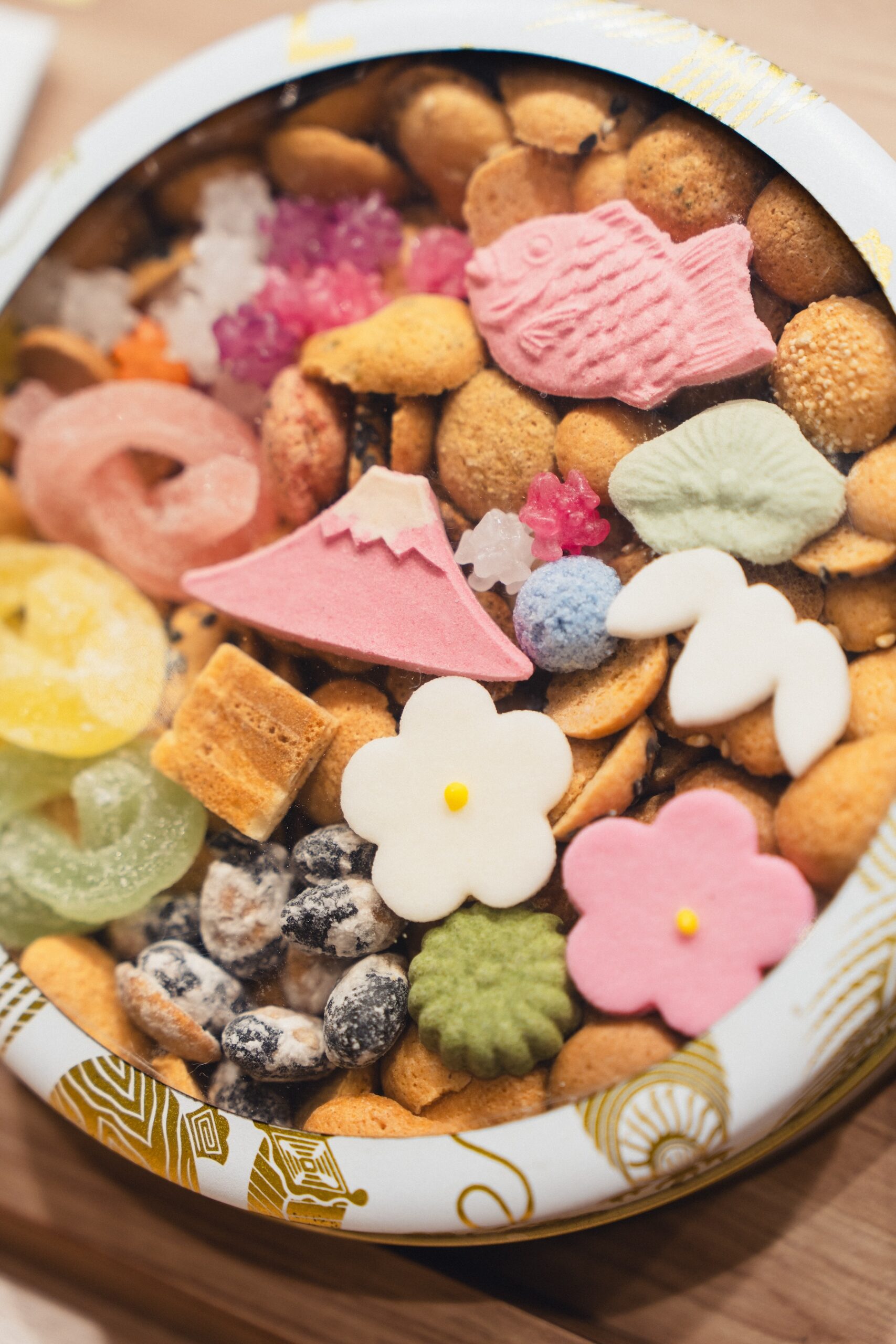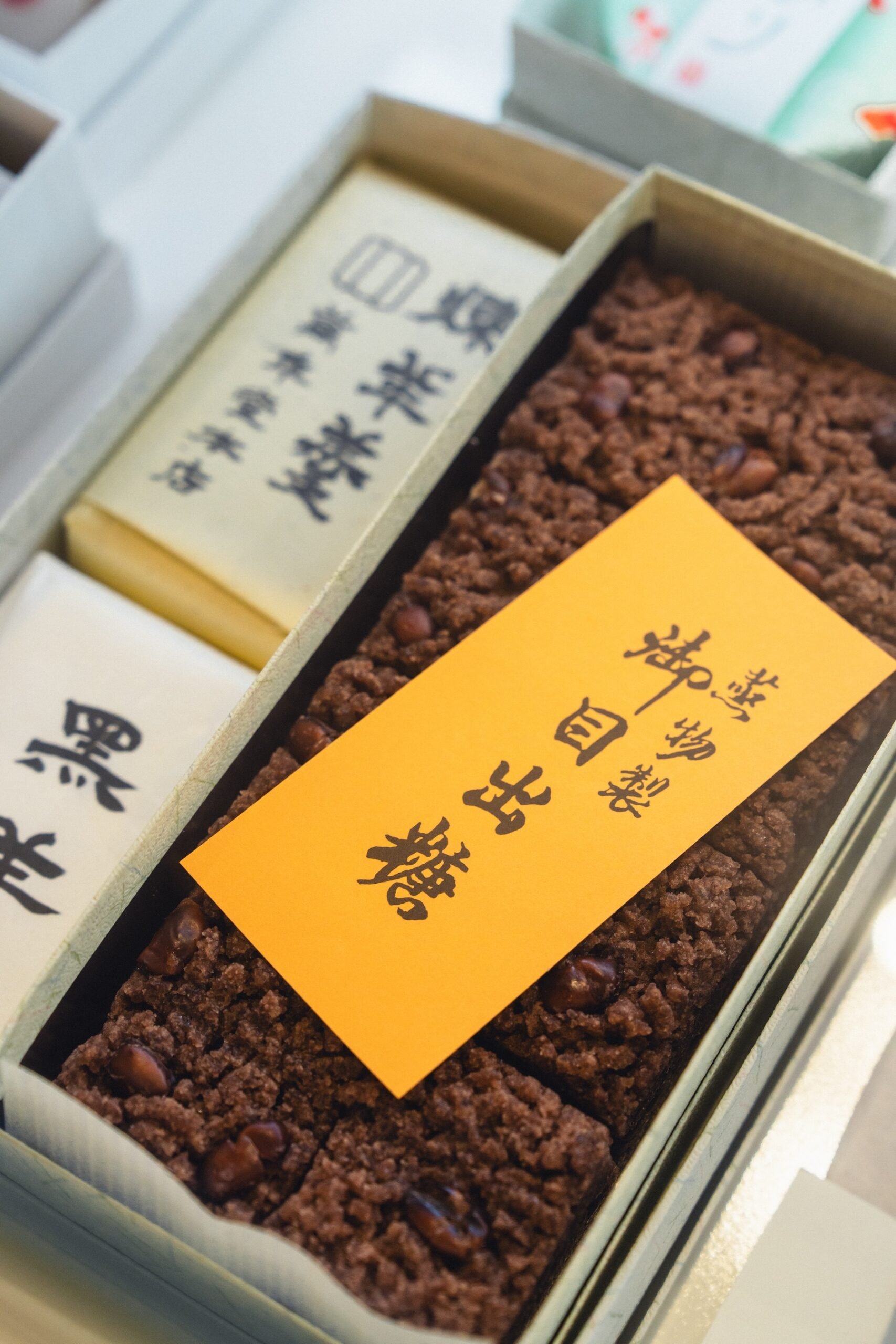CATEGORY
AREA
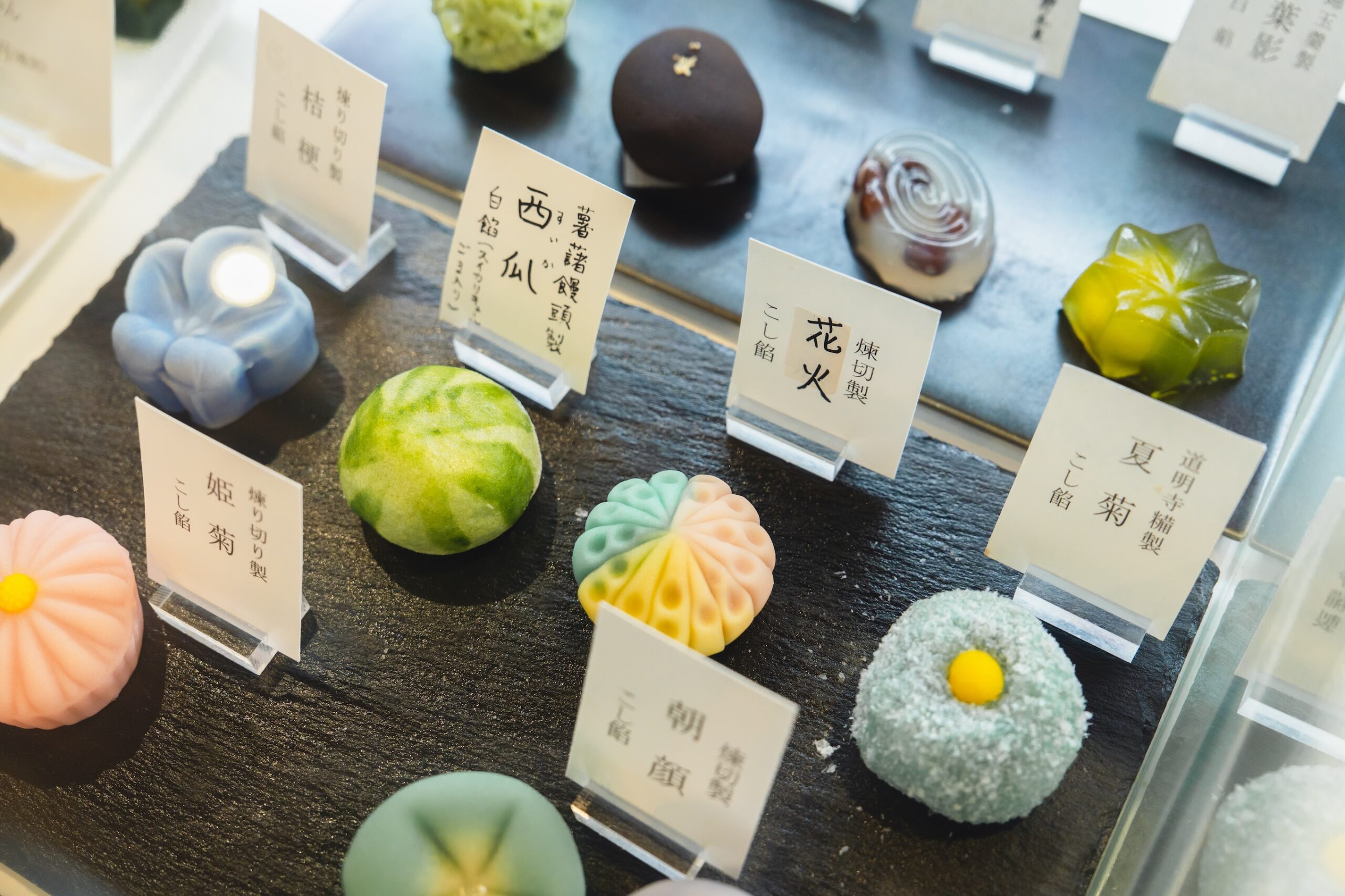
2025.09.19
In Ginza, a district brimming with glamour, the culture of wagashi—traditional Japanese confections that embody the spirit of giving—continues to flourish, with long-established shops lining its streets. From sweets once loved by cultural figures to seasonal confections, and from casual monaka (crispy wafers filled with red bean paste) to dorayaki (bean-filled pancakes), visitors can find perfect gifts and memorable souvenirs. Each piece of Ginza wagashi carries the refined elegance and iki—a unique sense of chic—that defines this district.
Walking through Ginza, you will encounter venerable wagashi shops that have quietly stood for generations—across the Meiji, Taisho, and Showa eras. Why do these traditional shops remain so cherished in a city that is constantly changing? The answer lies in the very history of Ginza itself.
“Kuya,” a famed monaka shop, still draws long lines even today.
With the establishment of a silver coin mint in the Edo period, Ginza developed as a commercial district. Eventually, it became a gathering place for politicians and business leaders, and the culture of ryotei (exclusive traditional restaurants) took root, turning Ginza into a glamorous venue for refined socializing. In this setting, wagashi came to be treasured as formal gifts.
After the Meiji era, department stores and cafés opened, transforming Ginza into a modern district where Western and Japanese cultures intersected. The phrase Gin-bura (strolling in Ginza) became popular, and writers and artists gathered here in search of inspiration. The culture of hand-delivered gifts flourished even further.
“Ginza Kikunoya Ginza Honten” began by selling Kabuki senbei near the Kabuki-za Theater.
Another milestone was the opening of the Kabuki-za Theater in 1889. As the premier stage for Kabuki, Japan’s traditional performing art, wagashi became indispensable—offered as gifts to actors backstage or enjoyed by audiences during intermissions. In this way, Ginza wagashi evolved with the times, always connecting people through sweetness.
Each long-established wagashi shop in Ginza has its own unique “form of tradition.” One such example is “Kuya,” founded in 1884 (Meiji 17).
Its signature Kuya Monaka, crafted from a recipe unchanged since the Meiji era, has been loved by cultural figures including the great novelist Natsume Soseki, famed for I Am a Cat. Free of preservatives and additives, these monaka highlight the natural flavors of the ingredients: fragrant, toasted wafers generously filled with homemade bean paste. The refined sweetness and convenient size make them approachable for all, which is why they have been cherished across generations.
Another example is “Kobikicho Yoshiya,” which has specialized solely in dorayaki since its founding in 1922 (Taisho 11). Located right next to the Kabuki-za Theater, its dorayaki have long been cherished as gifts for Kabuki actors and others in the entertainment world.
Distinctive for their chewy, hand-kneaded cakes and lightly sweet bean paste made from Tokachi-grown azuki beans in Hokkaido, these dorayaki are uniquely shaped into half-moons by folding a single cake over the filling. This smaller size is said to have been devised so Kabuki actors could eat them easily without disturbing their stage makeup. The careful individual wrapping also reflects a spirit of thoughtfulness toward both giver and recipient.
Meanwhile, “Seigetsudo Honten” in Ginza 7-chome continues to honor tradition while creating new confections. Guided by the philosophy of ichidai ikka (“one generation, one sweet”), the shop develops wagashi that reflect each era.
The current fourth generation created the Aisatsu Monaka. In today’s world, where wagashi may feel less accessible, this sweet emphasizes clarity in both theme and appearance. Its simple name—“Greeting”—and design of two hands clasped within a heart make the giver’s intention instantly recognizable. It represents an innovative wagashi that even those unfamiliar with the tradition can easily share as a gesture of greeting or gratitude.
Some shops preserve time-honored flavors, while others create new wagashi in tune with the times. Each pursues its own path while carrying on tradition. Together, Ginza’s long-established wagashi shops embody diverse “forms of tradition” that remain alive today.
Another appeal of Ginza wagashi shops is the subtle sense of iki—a refined, effortless chicness unique to Japanese culture. For example, “Kikunoya Ginza Honten,” founded in 1890, welcomes visitors with warm, approachable service, free of stiffness or formality. After selecting wagashi, customers may sit at the counter to complete their purchase at a relaxed pace. Upon request, staff will wrap the box in a furoshiki (traditional wrapping cloth) right before your eyes—an added touch of hospitality. Everywhere in the shop, one feels both dignity and warmth characteristic of Ginza.
Between shopping, guests can also watch artisans crafting wagashi through a small window. Seeing delicate handwork transform ingredients into beautiful confections is an awe-inspiring experience. Here, one does not simply buy sweets but engages with wagashi culture itself—this is Ginza-style hospitality.
Another place that embodies Ginza’s spirit of iki is “Mannendou Honten,” founded in 1617 in Kyoto Sanjo and relocated to Tokyo with the Meiji Restoration. In 2022, under the vision of its 13th-generation proprietor, the shop was renovated to include a tearoom where customers can enjoy wagashi as close to freshly made as possible.
In this bamboo-adorned tearoom, guests can savor wagashi with matcha in a calming atmosphere. This pairing of wagashi and Japanese tea culture is the essence of refined hospitality. Here, one can appreciate not only the sweets themselves but also the atmosphere—a true taste of Ginza’s elegance.
Wagashi, developed alongside Japan’s tea culture, are confections imbued with the seasons and with stories. In Ginza, where the tradition of hand-delivered gifts has long flourished, many sweets are designed to carry wishes for happiness.
Representative examples include Fukiyose from Ginza Kikunoya Ginza Honten, a festive assortment of Edo-style confections arranged in tins decorated with auspicious treasure motifs. The name Fukiyose (literally “gathered together”) not only refers to the assortment of small sweets but also conveys the meaning of “a sweet that brings happiness.” Featuring motifs such as Mt. Fuji and the four seasons, this confection is a perfect gift for celebratory occasions.
Another classic gift, beloved for over a century, is Omedetou from Mannendou Honten.
Based on the Korai Mochi Specifications passed down since the Genroku era, Korai Mochi resembled celebratory red rice. In the mid-Meiji period, it was renamed Omedetou (literally “Congratulations”).
Made by blending bean paste with rice and glutinous rice flour into a crumbly texture, then steaming with candied Dainagon azuki beans on top, it has a uniquely chewy consistency found nowhere else. While essential for formal occasions, it is also perfect for expressing everyday feelings of congratulations.
In Ginza wagashi, even the names, shapes, and wrapping papers embody the spirit of giving. Choosing sweets with loved ones in mind is a special kind of luxury unique to this district. Be sure to savor this distinctive experience in Ginza.
